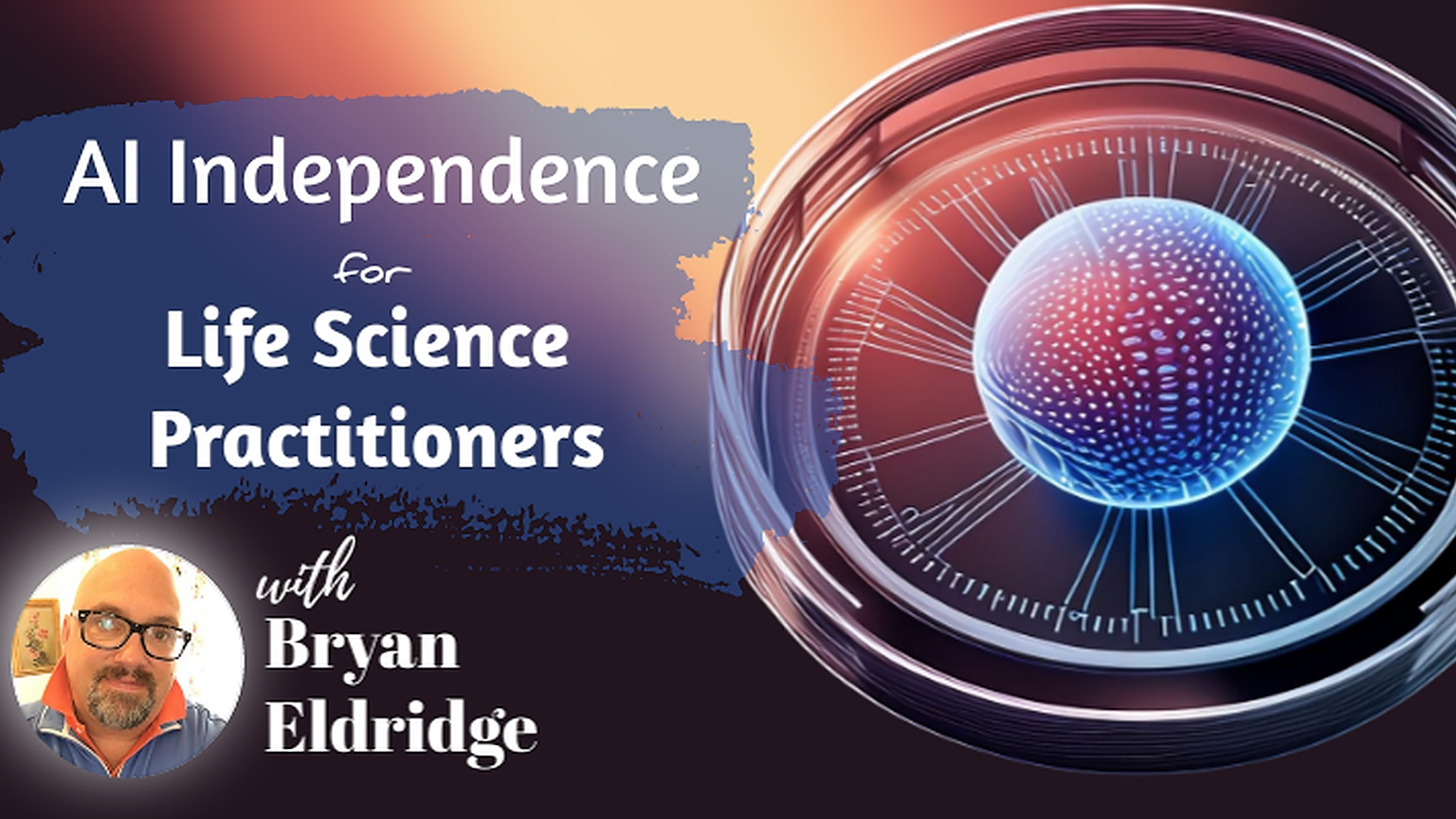AI Independence for Life Science Practitioners
9 Days
·Cohort-based Course
Develop a practical understanding of the AI landscape with an emphasis on its relevance to and the common use cases for the life sciences
AI Independence for Life Science Practitioners
9 Days
·Cohort-based Course
Develop a practical understanding of the AI landscape with an emphasis on its relevance to and the common use cases for the life sciences
Course overview
Develop into an independent AI practitioner!
Too often practitioners in the life sciences feel as though they are mostly or wholly dependent on data scientists or ML engineers to incorporate AI into their daily workflows and strategic research initiatives.
The reality is that impactful AI applications have been proven to consistently thrive at the intersection of strong subject matter expertise and the most basic of AI skills. This powerful confluence happens when practitioners are fully enabled to navigate and leverage existing AI resources, including: public data repositories; well-documented end-to-end projects on GitHub; and other publicly available and fee-based tools and pre-trained models that enable them to incorporate significant temporal and effort-based efficiencies into their AI-driven projects.
This course will enable life science practitioners with no prior experience in building AI-driven applications to leverage their subject matter expertise and existing capabilities around data and statistical models - in tandem with easily accessible support and resources - to design and execute their first AI project.
Who is this course for
01
Research scientists wanting to enhance their ability to analyze complex biological data, make good decisions, and accelerate their research.
02
Medical technicians looking to improve diagnostics and patient plans as well as improving patient safety.
03
Laboratory analysts needing to accelerate drug discovery, optimize processes, streamline quality control, and better support validation.
What you’ll get out of this course
Understand how AI has impacted the traditional data lifecycle
Traditional data lifecycles have been number>data>intelligence. With enveloping of AI by data science, that lifecycle has become richer and a bit more interesting as data now tends to evolve form nascent states all the way to predictive and even generative states.
Master the basics of the AI lifecycle
In broadest terms, building AI requires two macro-level steps: 1. learn the rules, 2. apply the rules. Everything you need to learn about AI elaborates around those two steps. From there, we will break it down to a slightly more complex set of steps and activities that you
Develop a comprehensive understanding of the contemporary AI landscape
Evolve your understanding of AI from a rough familiarity of buzzwords to a mastery of AI models from simple linear regression to cutting edge generative AI models.
Explain how each major type of AI model is applicable to life sciences
Contextualizing your understanding of the most common AI models with well documented and carefully curated examples and common case studies from the life sciences will ease your transition into a savvy AI practitioner.
Develop a familiarity of the resources and best practices needed to start building and evolve your AI capabilities
The culture led by the advent of Web 3.0 has exponentially grown the proclivity for practitioners of all kinds to share their work – including source code and documentation. And in few sectors is this practice more prevalent than in the field of AI. You will walk away from
Course syllabus
26 lessons • 5 projects
Week 1
AI Fundamentals for Life Science
How AI has impacted the traditional data lifecycle
Common AI Models and the problem spaces they address
Deep learning models - CNNs & RNNs
Week 2
Deeply contextualizing AI for the life sciences
Planning, exciting, and elaborating on your first AI MVP
Locating and applying the available resources for your AI Project
Post-course
Deep dive on bias, variance, and improving your model's performance
Bonus
Generative AI applications for the life sciences
Meet your instructor
Bryan D. Eldridge, M.Ed.
Bryan D. Eldridge, M.Ed.
Master Instructor
Bryan has worked with some of the largest pharmaceutical companies and biotech labs in the world to design and deliver training programs for drug researchers, microbiologists, product stability teams, pharmaceutical laboratory analysts, documentation specialists, and system validation specialists.
Be the first to know about upcoming cohorts
AI Independence for Life Science Practitioners
Course schedule
4-6 hours per week
Tuesdays & Thursdays
4:00pm - 5:30pm EST
90 minute lectures will be delivered from 4:00pm - 5:30pm Tuesdays and Thursdays.
May 7, 2022
Feel free to type out dates as your title as a way to communicate information about specific live sessions or other events.
Weekly projects
2 hours per week
Schedule items can also be used to convey commitments outside of specific time slots (like weekly projects or daily office hours).
AI-Driven Diagnostics: Leading the Frontline in Detection & Prediction
Download this valuable overview of how AI is revolutionizing the area of medical image diagnostics - including a step-by-step example of how to use ChatGPT to start analyzing x-rays.
Download this free resource!
Learning is better with cohorts
Active hands-on learning
This course builds on live workshops and hands-on projects
Interactive and project-based
You’ll be interacting with other learners through breakout rooms and project teams
Learn with a cohort of peers
Join a community of like-minded people who want to learn and grow alongside you
Frequently Asked Questions
Stay in the loop
Sign up to be the first to know about course updates.
Be the first to know about upcoming cohorts
